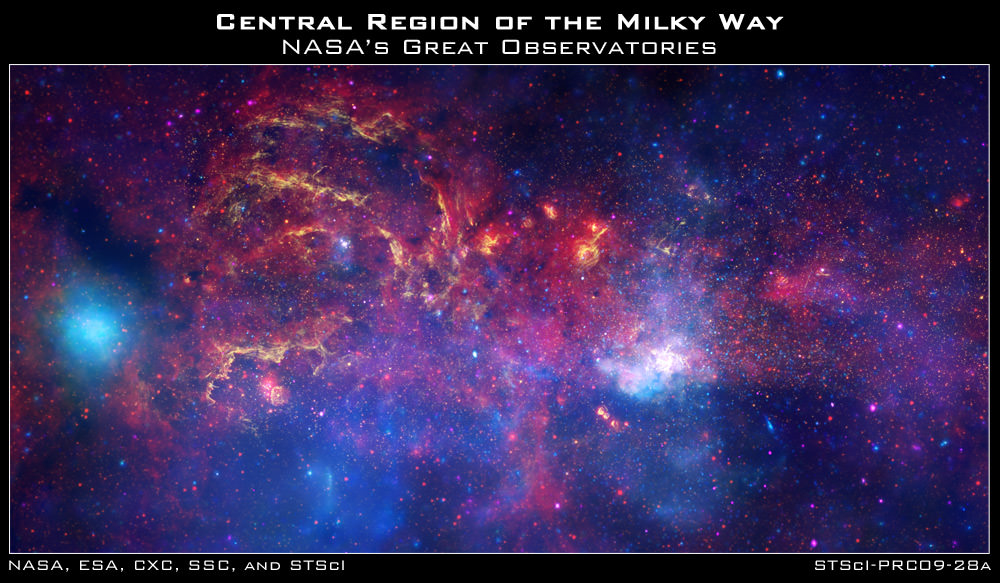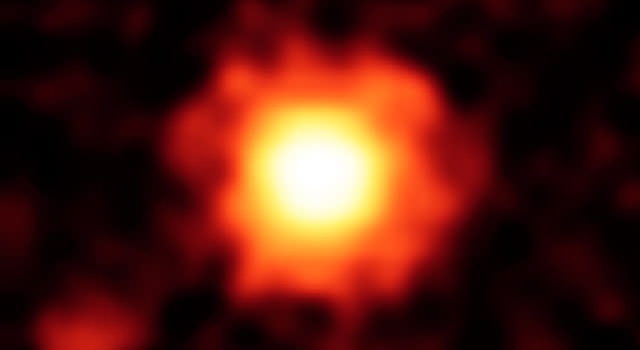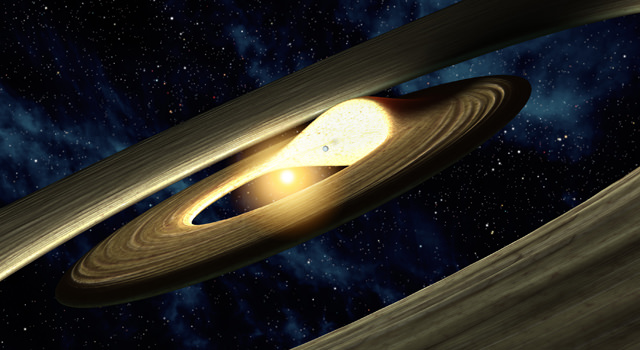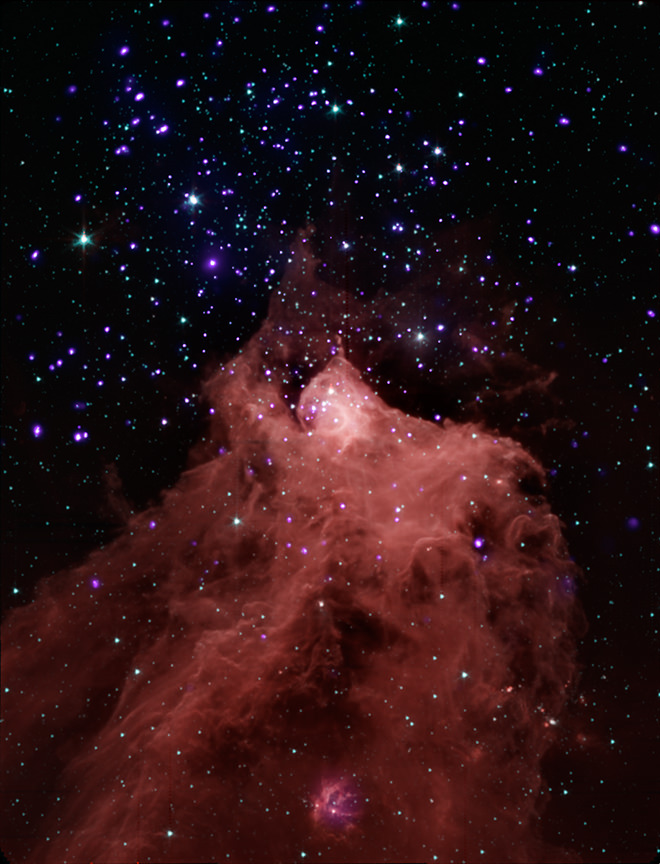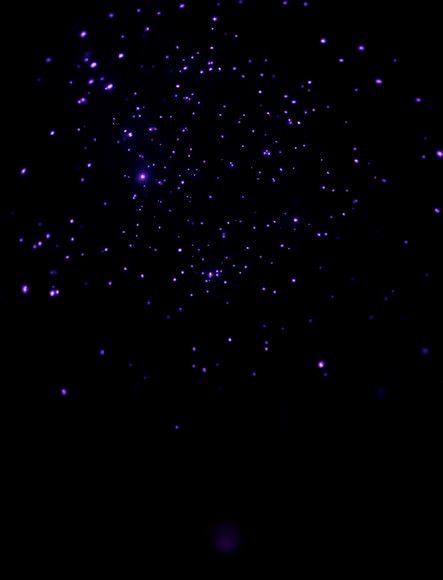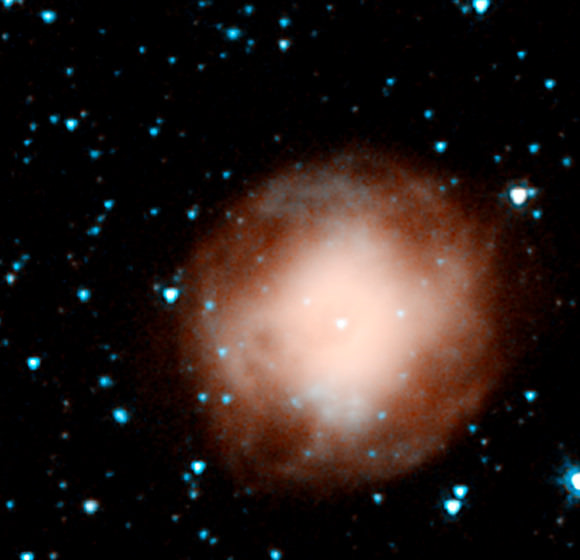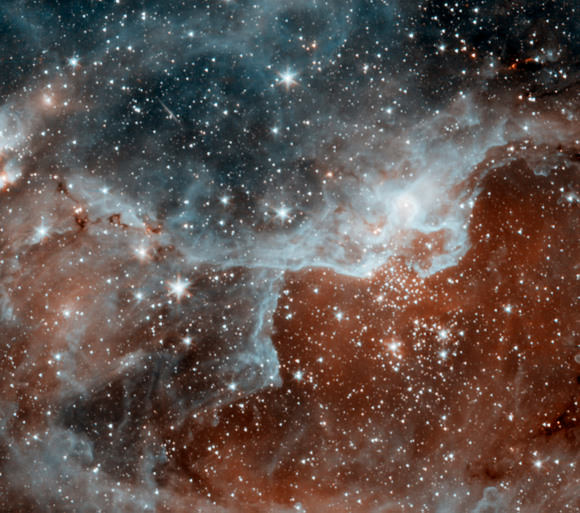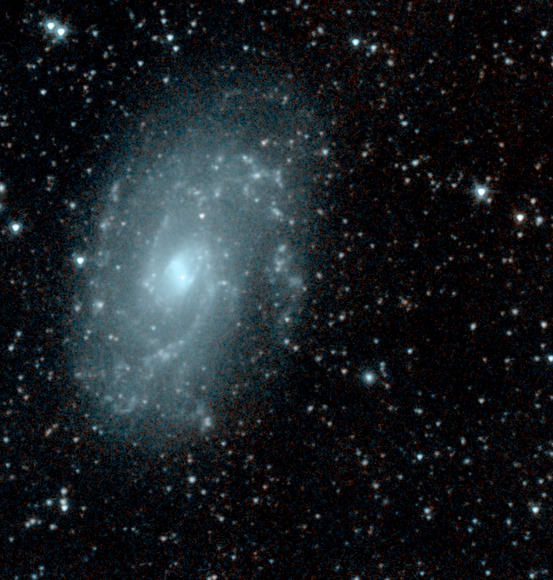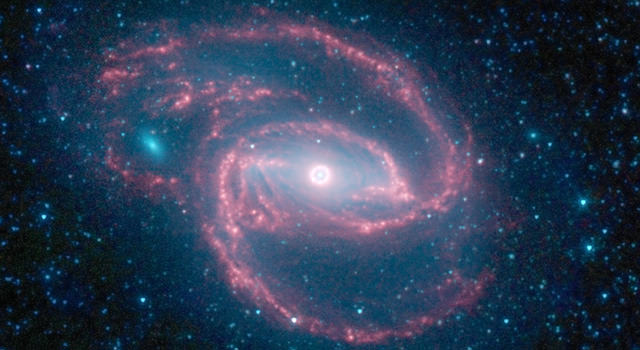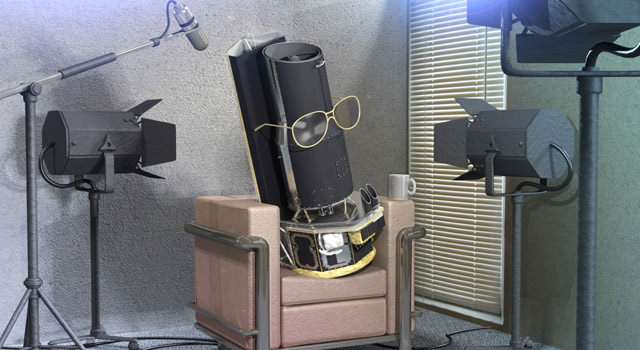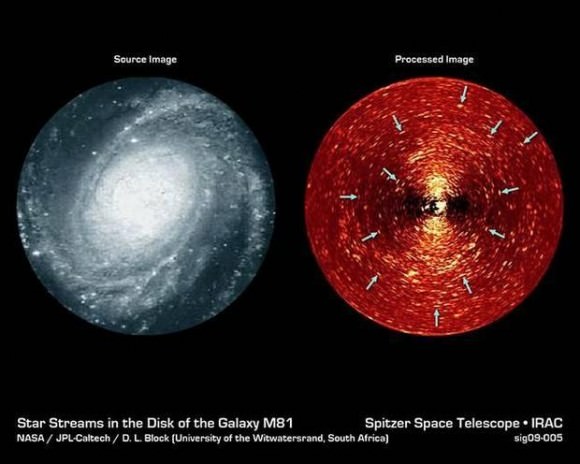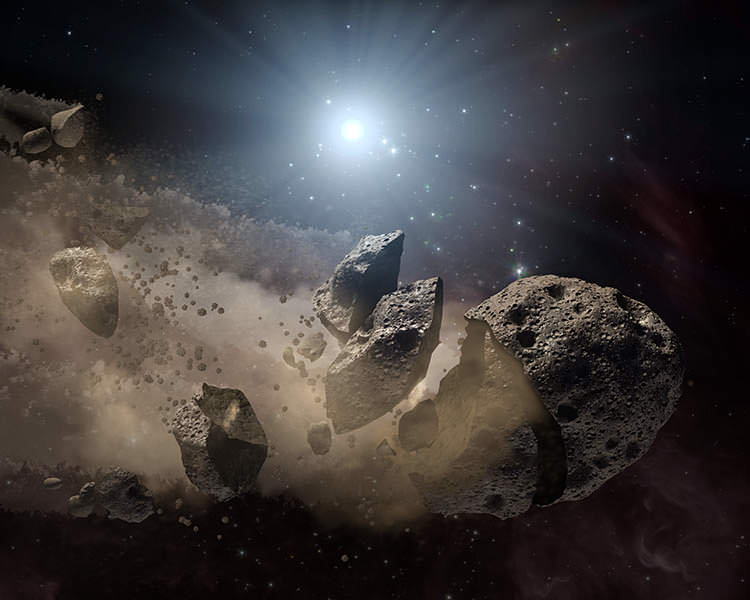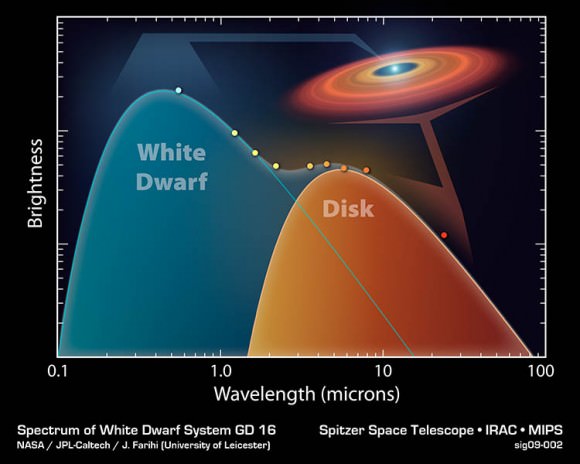[/caption]
The Spitzer Space Telescope is close to running out of coolant. Around May 12, the telescope will use up the last drop of the coolant that chills the instruments to just a few degrees above absolute zero. Everyone knew this was coming, but still it is sobering news. However, even though the coolant will be depleted, Spitzer will remain cold enough to still probe the universe with its infrared detectors for at least a couple of years. But we all like to think these missions will go on forever, at least I do anyway. The Jet Propulsion Laboratory shared this news in one of the more creative press releases ever put out by any NASA center: they interviewed the telescope. That’s right, the telescope. Not the principal investigator, not the chief engineer, but the telescope itself.
The spacecraft, which is now in orbit around the sun more than 100-million kilometers (62-million miles) behind Earth, will heat up just a bit — its instruments will warm up from – 456 degrees Fahrenheit (-271 Celsius) to – 404 degrees Fahrenheit (-242 Celsius).
If Spitzer could talk, here’s what the telescope might say:
Interviewer: It’s cold in here.
Spitzer: Sorry. Even though I’m warming up, I still need to be quite chilly for two of my infrared channels to continue working.
Interviewer: Why do infrared telescopes need to be cold?
Spitzer: Good question. Infrared light is produced by heat. So, engineers reduce my own heat to make sure that I’m measuring just the infrared light from the objects I’m studying. This is the same reason why I circle around the sun, far behind Earth, and why I have big sun shields — to keep cool.
Interviewer: Tell me, Spitzer, about what you consider to be your greatest discovery?
Spitzer: Probably my work on exoplanets, which are planets that orbit stars other than our sun. I hate to brag, but I was the first telescope to see actual light from an exoplanet. I was also the first to split that light up into a spectrum. Oh, sorry, there I go again with the techie talk. Light is made up of lots of different wavelengths in the same way that a rainbow is made up of different colors. I was able to split an exoplanet’s light up into its various infrared wavelengths. This spectral information teaches us about planets’ atmospheres.
Interviewer: What did you learn about the planets?
Spitzer: For one thing, I learned that the hot gas exoplanets, called “hot Jupiters,” are not all alike. Some are wild, with temperatures as hot as fire and almost as cold as ice. Others are more even-keeled. I also created the first temperature map of an exoplanet, and watched a storm of colossal proportions brewing across the face of one bizarre exoplanet – it has an orbit that swings in really close to its star and then back out to about where Earth sits in our solar system.
Interviewer: You seem to really like planets.
Spitzer: Well, you know, I wasn’t even originally designed to see exoplanets! It was a complete surprise to me that I had this amazing ability. I can tell you that I do, and always will, have a thing for planetary disks. Because I have infrared eyes, I can see the warm and dusty planetary materials that swirl in disks around young stars. I can also see older disks littered with the remnants of planets. In fact, I’ve probably looked at thousands of disks so far. What’s been fun is finding them around all sorts of oddball stars, such as those that are dead, doubled up as twins and even as small as planets. Bottom line is that the process of growing planets seems to happen quite easily all over the galaxy, and perhaps the universe.
Interviewer: Does that mean aliens could be everywhere?
Spitzer: I can’t really give you a good answer for that. Yes, the studies of disks are showing us that rocky planets are common, but we don’t know if the planets could have life. Also, keep in mind that, as of now, nobody has detected any planets that are just like Earth. These would be rocky worlds around stars like our sun that have the right temperature for lakes and oceans. That job will most likely fall to NASA’s Kepler mission, which will begin hunting for them soon.
Interviewer: Did you look at other objects besides disks and planets?
Spitzer: Oh yes, certainly. I have looked at comets in our solar system, the farthest galaxies known, and everything in-between. I was really excited to find hundreds of hidden black holes billions of light-years away. Astronomers had known they were there because they shoot X-rays into space that can be detected as a diffuse glow. But the objects themselves were choked in dust. My infrared eyes, unlike your human eyes, can see through dust, so I was able to round up a lot of these missing black holes.
Interviewer: Is there any other discovery you want to mention?
Spitzer: There are too many to list, but I am particularly proud of this huge mosaic I took of a large swath of our Milky Way galaxy. It looks stunning when you print it out to poster size, and it’s the best view ever of the bustling central portion of our galaxy. You see, the middle of the Milky Way is hopping with stars and dust. It’s chaos, and visible-light cannot escape. These observations not only look cool, they also helped astronomers remap the structure of our galaxy. The new map shows just two spiral arms of stars instead of four as previously believed. How crazy is that!
Interviewer: So what lies ahead?
Spitzer: Well, I’m really looking forward to the warm mission, because now that I have just two infrared channels working, I have more time to look at larger chunks of space for longer periods of time. I can help astronomers answer some really important “big picture” questions, which we didn’t have time for before.
Interviewer: Can you list some specific projects you’ll be working on?
Spitzer: I plan to continue studying exoplanets, including new “hot Jupiters” that Kepler is expected to find. I will also refine estimates of the rate at which our local universe, or space, is expanding. And I will stare at the very distant universe, trying to see some of the farthest objects possible. Oh, and I am also going to survey thousands of asteroids in our neck of the solar system, and get the first real estimate of their size distribution. This will tell us approximately how often big asteroids might come close to Earth.
Interviewer: That sounds scary.
Spitzer: Actually, this information will help us prepare for them. And NASA tracks near-Earth objects diligently. More information can only help.
Interviewer: Will you still take the pretty pictures?
Spitzer: You think my pictures are pretty? Thank you! Yes, I will still snap a lot of pictures. For instance, I will continue to probe cloudy star-forming regions in our galaxy, which often make dramatic pictures.
Interviewer: Anything else you’d like to add?
Spitzer: My cool years have been more than I could ask for, and I look forward to more adventures to come. I’d also like to thank all of the scientists and engineers who have worked so hard to make my mission an ongoing success. And, if any of my fans out there want more info, they can go to www.spitzer.caltech.edu/spitzer.

